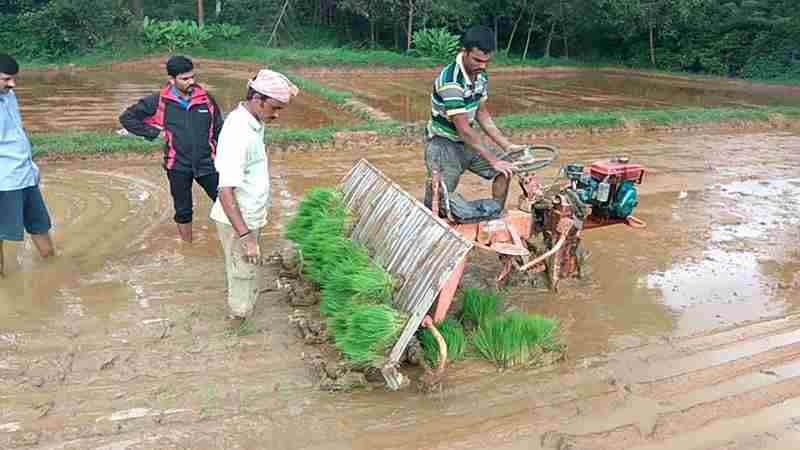Land Preparation

Almost every type of soil can be used for rice cultivation provided the region has a high level of humidity, sufficient rainfall with irrigational facilities, and a high temperature. The major types of soils for rice cultivation are black soil, red soil (loamy and yellow), laterite soil, red sandy, terai, hill and medium to shallow black soil. It can be even cultivated on silts and gravels. If the cultivating soil has rich organic matter and if it powders easily on drying or forms a puddle when wet then it is considered to be ideal.
pH Level for Rice Farming
Rice can be cultivated in both acidic as well as alkaline soil.
Land Preparation
Rice is cultivated in different methods depending on the water availability and weather. In areas where the rainfall is abundant clubbed with abundant water supply, wet system of cultivation is followed. On the other hand, in areas where irrigation facilities are unavailable and water is scarce, dry cultivation system is followed.
1. Wet Cultivation System
The land is thoroughly ploughed and flooded with water upto 5cm in depth. In case of clayey or loamy soil the depth must be 10 cm. Post puddling the land is levelled so as to ensure uniform water distribution. Seedlings are sown or transplanted after leveling.
2. Dry Cultivation System
In this rice cultivation process the soil must have a good tilth hence it must be ploughed thoroughly. In addition, farm yard manure must be distributed on the field uniformly at least 4 weeks before sowing. The seeds are then sown with 30 cm spacing between the plants.
Rice Cultivation Method

Most farmers practice nursery bed method. Nursery beds are made occupying about 1/20th of the total field area. The paddy seeds are sown in the bed. They are ready within 25 days of sowing in low land areas while in higher altitudes they take about 55 days to become ready for transplantation. There are four different practices of cultivation of rice, viz. transplantation method, drilling method, broadcast method and Japanese method.
Transplantation is the most commonly used method wherein seeds are first sown in nursery and the seedlings are transplanted to the main field once they show 3-4 leaves. Although this is the best yielding method, it requires heavy labor.
Drilling method is exclusive to India. In this method, one person ploughs a hole in the land and the other person sows the seed. Ox is the most commonly used ‘person’ to plough the land.
Broadcast method generally involves scattering of the seeds manually over a large area or in the entire field. Labor involved is very less and so is the precision. This method produces very less yield as compared to others.
Japanese method has been adopted for the high yielding variety of rice and those that need a high amount of fertilizers. Seeds are sown in nursery beds and then transplanted to the main field. It has shown tremendous success for the high yielding varieties.
Another newly found technique is SRI method of rice cultivation. This is a high yielding method with less water but this method is more laborious.